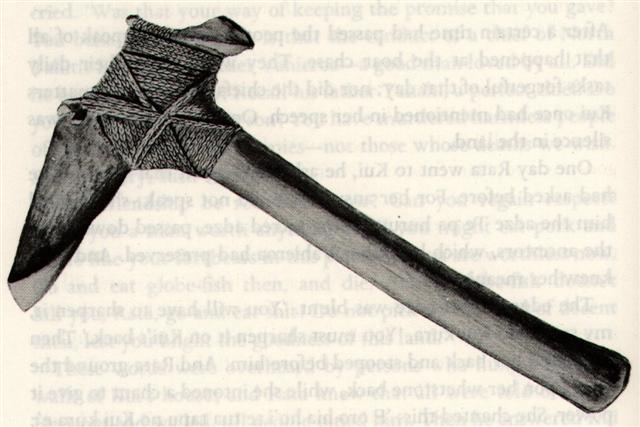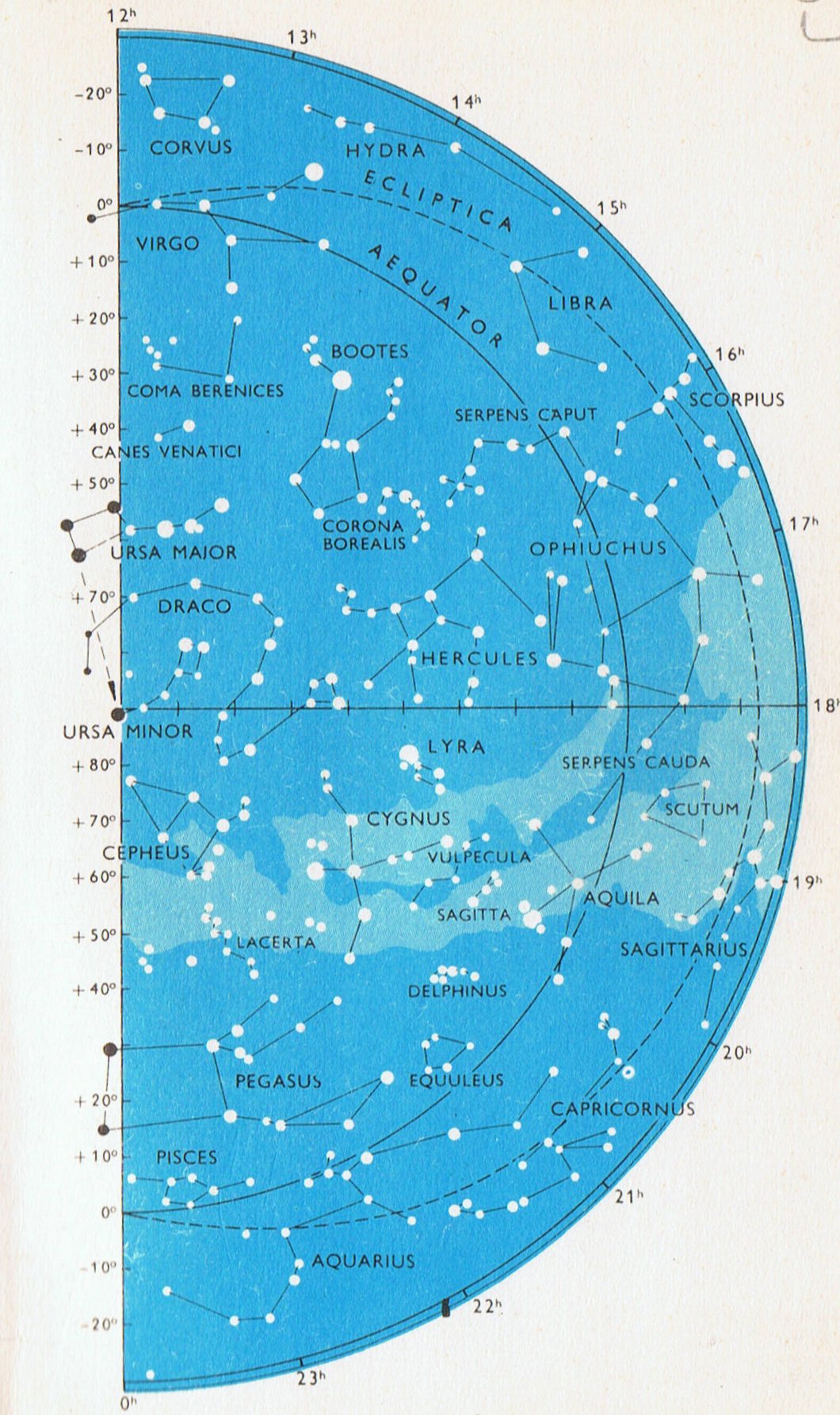|

 |
 |
 |
|
Ga1-29 |
Ga1-30 |
Ga2-1 |
|
Al Han'ah-4 |
Furud (94.9) |
Well-22 |
|
TEJAT PRIOR
(93.4), γ
Monocerotis (93.5),
κ Aurigae
(93.6), κ Columbae
(93.8) |
δ Columbae (95.2),
TEJAT POSTERIOR,
Mirzam (95.4),
Canopus (95.6), ε
Monocerotis (95.7),
ψ1 Aurigae
(95.9) |
|
June 22 (173) |
23 (540) |
24 (*95) |
|
ºJune 18 (169) |
19 (536) |
20 (*91) |
|
'May 26 (146) |
27 (513) |
28 (*68) |
|
"May 12 (132) |
13 (*53) |
14 (500) |
|
η Sagittarii (276.9) |
Purva Ashadha-20 |
|
KAUS MEDIUS,
κ Lyrae (277.5),
Tung Hae (277.7) |
KAUS AUSTRALIS
(278.3), ξ
Pavonis (278.4), Al
Athfar (278.6) |
|
December 22 (356) |
23 (*277) |
24 |
|
ºDecember 18 (*272 =
2 * 136) |
19 |
20 (354 = 12 * 29½) |
|
'November 25 (329) |
26 (*250) |
27 |
|
"November 11 |
12 (*236) |
13 (317) |
... Crook (Auriga) The
Crook depicts a shepherd tending
a goat-kid. It naturally
symbolizes the spring-time when
the majority of calves, lambs
and kids are born in the
cattle-folds. The shepherd also
symbolizes the king, who
figuratively guides his people
on the paths of safety and
security. The Crook therefore
appropriately rises in the first
month of the year when the king
was enthroned and empowered to
rule for another year ...
 |
 |
|
toki |
Ga2-1 |
|
Toki
Small basalt axe.
Vanaga. Stone adze.
Van Tilburg.
Ha'amoe ra'a toki
= 'Put the adze to
sleep' (i.e. hide it
in the temple during
the night). Barthel.
Month of the ancient
Rapanui
calendar. Fedorova
according to
Fischer.
To'i. T.
Stone adze (e
to'i purepure =
with the wounderful
adze). Henry.
The Araukan Indians
in the coastal area
of northern Chile,
have customs similar
to those on the
Marquesas and in
both areas toki
means adze according
to José Imbelloni.
The Araukans also
called their chief
of war toki
and the ceremonial
adze symbolized his
function and was
exhibited at the
outbreak of war. In
Polynesia Toki
was the name of a
chief elevated by
the Gods and his
sign was the blade
of a toki.
Fraser.
Axe, stone hatchet,
stone tool ...;
maea toki, hard
slates, black, red,
and gray, used for
axes T. P Pau.:
toki, to strike,
the edge of tools,
an iron hatchet.
Mgv.: toki,
an adze. Mq.:
toki, axe,
hatchet. Ta.: toi,
axe. Churchill. |
 |
 |
 |
 |
|
Ga2-5 |
Ga2-6 (36) |
Ga2-7 |
Ga2-8 |
|
ν Puppis (99.2),
ψ3 Aurigae
(99.4),
ψ2 Aurigae
(99.5)
Gemma
|
ψ4 Aurigae
(100.5), Mebsuta
(100.7) |
Sirius (101.2),
ψ5 Aurigae
(101.4), ν Gemini
(101.6),
ψ6 Aurigae
(101.7) |
τ Puppis (102.2),
ψ7 Aurigae
(102.4) |
|
June 28 (179) |
29 (180 - 80 + 366 =
*466) |
30 |
July 1 |
|
St John's Eve |
ºJune 25 |
26 (177) |
27 (*464) |
|
'June 1 (152) |
2 (*73) |
3 (520) |
4 |
|
"May 18 (*58) |
19 |
20 (140) |
21 (*427) |
|
no star listed (282) |
ζ Pavonis (283.4), λ
Cor. Austr. (283.6),
Double Double
(283.7),
ζ Lyrae
(283.8) |
South Dipper-8 |
Sheliak, ν Lyrae
(285.1), λ Pavonis
(285.7)
Atlas
|
|
Φ SAGITTARII
(284.0), μ Cor.
Austr. (284.6), η
Cor. Austr., θ
Pavonis (284.8) |
|
December 28 |
29 |
30 (364) |
31 (*285) |
|
Christmas Eve |
ºDecember 25 |
26 (360) |
27 (*281) |
|
'December 1 (*255) |
2 (336) |
3 |
4 |
|
"November 17 |
18 (322) |
19 (*426 - 183 =
*243) |
20 (141 + 183 = 424) |
 |
 |
 |
 |
|
Ga2-9 |
Ga2-10 (40) |
Ga2-11 |
Ga2-12 |
|
ψ8 Aurigae
(103.2),
Alhena
(103.8),
ψ9 Aurigae
(103.9) |
Adara
(104.8) |
ω Gemini (105.4),
Alzirr
(105.7),
Muliphein
(105.8) |
7h (106.5) |
|
no star listed (106) |
|
July 2 (549) |
3 (*104) |
4 (185) |
5 |
|
ºJune 28 (*465) |
29 (180) |
30 |
ºJuly 1 |
|
'June 5 |
6 (157) |
7 (*78) |
8 (525) |
|
"May 22 |
23 (*63) |
24 (144) |
25 (*431) |
|
Ain al Rami (286.2),
δ Lyrae (286.3), κ
Pavonis (286.5),
Alya (286.6) |
ξ Sagittarii
(287.1), ω Pavonis
(287.3), ε Aquilae,
ε Cor. Austr.,
Sulaphat (287.4), λ
Lyrae (287.7),
Ascella,
Bered (Ant.) (287.9) |
Uttara Ashadha-21 |
19h (289.2) |
|
NUNKI
(288.4), ζ Cor.
Austr. (288.5),
Manubrium (288.8), ζ
Aquilae (288.9) |
λ Aquilae (Ant.)
(289.1), γ Cor.
Austr (289.3), τ
Sagittarii (289.4),
ι Lyrae (289.5), δ
Cor. Austr. (289.8)
|
|
January 1 (366) |
2 |
3 (*288) |
4 |
|
ºDecember 28 |
29 |
30 (364) |
31 (*285) |
|
'December 5 |
6 (*260) |
7 |
8 (342) |
|
"November 21 |
22 (326) |
23 |
24 (*248) |
... The first half
beginning with Alef
- an ox, and ending with
Lamed - a whip.
The second list begins
with Mem - water,
and continues with
Nun - fish, Samek
- fish bones, Ayin
- a water spring, Peh
- the mouth of a well,
Tsadi - to fish,
Kof, Resh
and Shin are the
hook hole, hook head and
hook teeth, known to
exist from prehistoric
times, and the Tav
is the mark used to
count the fish caught
...
Evidently these 9 ψ
('whip') stars could
have been intended to
show where the first
half of the sequence of
'months' had ended. The
2nd half could then need
a good whipping to get
going:
... At the beginning of
44 B.C. - when Ceasar
was still alive - the
Senate decided to raise
statues of him in all
the temples and to
sacrifice to him on his
birthday in the month
Quintilis, which in
honour of him was
renamed July. He was
raised to the status of
a god (among the other
gods of the state) under
the name Jupiter Julius.
Marcus Antonius, who
this year was consul
together with Ceasar,
became high priest and
responsible for the
ceremonies. In the
middle of February, at
the time of the old
feast of Lupercalia, he
ran around naked (except
for a girdle - like a
maro), and whipped
the Roman ladies with
thongs made from
goat-skin [februa],
in order to promote
('kick' - Rei),
their fertility. Surely
there must be some
connection with the
she-goat Amalthea
(Capella) who suckled
Zeus ...
...
Februa, also
Februatio, was the
Roman festival of ritual
purification, later
incorporated into
Lupercalia. The
festival, which is
basically one of Spring
washing or cleaning
(associated also with
the raininess of this
time of year), is old
and possibly of Sabine
origin. According to
Ovid, Februare as
a Latin word which
refers to means of
purification
(particularly with
washing or water)
derives from an earlier
Etruscan word referring
to purging.
The Roman month
Februarius ('of
Februa', whence the
English February) is
named for the
Februa/Februatio
festival, which occurred
on the 13th to 15th days
of this Roman month. A
later Roman god
Februus personified
both the month and also
purification, and is
named for them. Thus,
the month is named for
the festival and not for
the god ...
On Easter
Island their first month
(possibly named Toki)
could have begun after
the calendar of
Gregorius XIII had
finished - i.e. as read
nakshatra wise in
rongorongo times. June
27 = 5 days after Ga1-29
was at the opposite side
of the sky compared to
Vega. In the following
nights the stars Ascella
and Nunki were close to
the Full Moon. These
stars had once indicated
where 'Land' in the sky
would end and probably
the idea had not been
forgotten:
... This [σ]
has been identified with
Nunki of the
Euphratean Tablet of
the Thirty Stars,
the Star of the
Proclamation of the Sea,
this Sea being
the quarter occupied by
Aquarius, Capricornus,
Delphinus, Pisces, and
Pisces Australis. It is
the same space in the
sky that Aratos
designated as Water
...

If this
'Water' was beginning
beyond Ascella and
Nunki, then it seems
reasonable to assume
'Land' would begin at
the opposite side of the
sky roof, beyond the
other arm of the Milky
Way:
|
rongorongo
|
July 3
(*104) |
4 (185) |
182 |
Jan 2 (367) |
3 (*288) |
+4 |
|
Greg XIII |
ºJune 29
|
30 (181) |
ºDec 29 |
30 (364) |
0 |
|
'Al
Sharatain |
'June 6
(157) |
7 (*78) |
'Decr 6
(*260) |
7 (341) |
-23 |
|
"Bharani |
"May 23
(*63) |
24 (144) |
"Nov 22
(326) |
23 (*247) |
-37 |
|
|
Land
® |
Sea
® |
|
|
|
Adara and
Muliphein |
Ascella and
Nunki |
|
.jpg)
Adara
(the Virgins) is
ε Canis Majoris and
Muliphein γ Canis
Majoris.
|